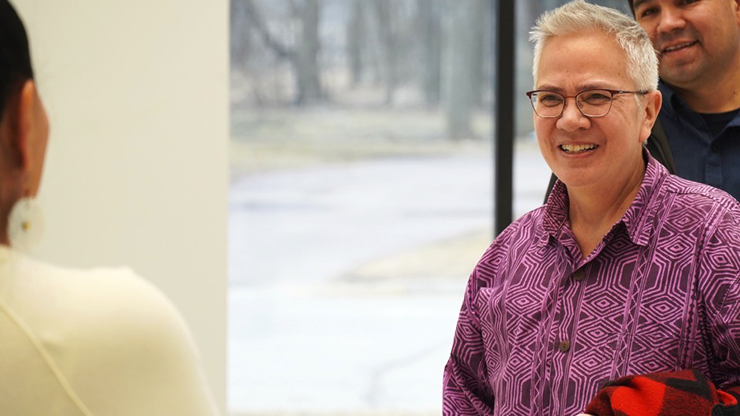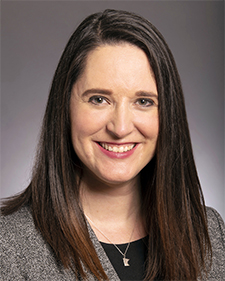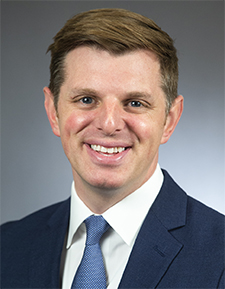For Minnesota Housing Commissioner Jennifer Leimaile Ho, there was a lot to like about election night, 2022.
Her boss, Gov. Tim Walz, was reelected. His party retained control of the Minnesota House of Representatives. And the DFL regained control of the Minnesota Senate for the first time since Walz was first elected.
“It goes without saying that I’m delighted that the governor and the lieutenant governor – and therefore I – get a second term,” Ho said. But she added that it took a while for it to sink in that she would be working with a DFL-controlled House and Senate rather than the politically divided Legislature of the last four years.
“With this budget surplus, no matter how large it is in the forecast, between the governor and lieutenant governor and Rep. (Mike) Howard chairing the House and Sen. (Lindsey) Port chairing the Senate, things really do line up for an opportunity to go really big on housing,” Ho said.
A year ago, Walz proposed operating and bonding bills that contained roughly $1 billion for affordable housing, homelessness, workforce housing and down payment assistance.
“I would anticipate trying to grab something that is roughly that big, and that big is huge in terms of historic housing investment,” Ho said. “I’m feeling very hopeful.”

Housing is a rare bipartisan issue in the Legislature because shortages and affordability confront communities statewide – from a lack of affordable housing in more-expensive markets to a shortage of workforce housing across Minnesota. In 2019, Senate majority Republicans signaled the importance of the issue by breaking it off from a larger committee with Sen. Rich Draheim of Madison Lake in charge. Ho notes that a 2019 housing bill passed the state Senate unanimously.

Port, of Burnsville, served on the Senate Housing Finance and Policy Committee the last two years and was selected as chair by newly designated Senate Majority Leader Kari Dziedzic, who had been the ranking DFL member of the committee.
“A lot is possible,” Port said of the DFL state government trifecta. The failure to pass housing infrastructure bonds or a larger bonding bill last session leaves work unfinished. She also said there could be more money for responses to homelessness, down payment assistance to help close an ownership gap between white residents and people of color and programs like Homework Begins at Home built on the notion that students do better when they have stable housing. Port also called out the need for what is termed workforce housing – affordable housing for workers in parts of the state that lack housing options for growing workforces.

Richfield-based Howard will become House Housing Finance and Policy chair, replacing Rep. Alice Hausman who did not seek reelection to the House. He termed DFL control of the three parts of the legislative process “a perfect storm.”
“Frankly, we have an obligation to take action because it is so urgently required,” Howard said.
“The housing crisis has only worsened,” he said, citing post-pandemic evictions, the lack of new construction to meet demand and the lack of state policy changes to address the issue. “I think we should be optimistic about what we can do.”
Currently, housing programs make up 0.3% of the state general fund budget of $52 billion over two years. “The moment calls us to think bolder, to think bigger. We can’t really nibble around the edges,” Howard said.
Because most bonds require a 60% vote, the minority parties in the House and Senate have clout they lack on most other issues.
One type of bond, however, takes away that clout. Housing infrastructure bonds, because they do not pledge the full faith and credit of the state, need just a simple majority. Known as appropriation bonds, these depend on biennial appropriations in the state budget for annual debt service. As such, they do not get the lowest interest rates but are still a cheap way for the state to borrow.
In addition, these bonds are not restricted for public-only uses and can be a source of the state share of projects built and owned by nonprofit organizations. Lawmakers passed $60 million in this type of bond in 2019 when the larger bonding bill failed to pass. In 2020 and again in 2021, $100 million in infrastructure bonds were approved.
Still, the need outruns that supply of state matching funds. Ho said that in years when no bonds are approved – like this year – one of four projects seeking state help get it. In years when infrastructure bonds are approved, that ratio only falls to one in three. Since 2018, the Legislature has authorized or appropriated $612,192 in funding via bonding bills and budget bills, the agency reports.
Bonding isn’t the only way the Legislature can boost housing affordability. In the agreed-to-but-ultimately-not-passed taxes bill last session, a simplification in the renter’s tax credit was expected to expand the number of beneficiaries from 318,000 to 438,000. The change would allow it to be claimed on regular income tax filings rather than a separate application in the summer.
The same bill contained a refundable tax credit of $2,000 per child age 4 or younger. Refundable credits benefit eligible taxpayers whether they owe state taxes or not. Rep. Aisha Gomez, the Minneapolis DFLer who is the new chair of the House Taxes Committee, has been a leader on homelessness responses. Sen. Ann Rest, the New Hope DFLer who is the new chair of the Senate Taxes Committee, recently served on the Housing committee.
During the pandemic, well over $500 million in federal emergency funds went directly to rental assistance for households at risk of eviction. Walz signed an emergency order banning most evictions – a protection that ended this past June. He also allocated $100 million for a state-run but federally financed rental assistance program in 2020. That was replaced with a specific federal allocation that ended up sending out $449 million in rent and utility assistance.
But the agency and its RentHelpMN faced criticism. Rental housing providers complained of a balky application process and slow payments. Republicans echoed those concerns. DFLers were unhappy with a sudden end to applications a year ago when funding ran low.
Republicans who controlled the Senate and the housing committee made noise about using the Senate’s confirmation authority to remove Ho from office, though a vote was never taken.
“I’m proud of our emergency rental assistance program,” she said. “We put $450 million out there to help renters and landlords. We did it in record time. It was enormous.” Three times the federal government sent additional money to Minnesota from states that didn’t or couldn’t use their allocations. But she acknowledges the struggles that the agency went through.
“It’s not what we do. The hardest thing was standing up something that was so big and so urgent at one time because the money was always going to run out,” Ho said.
Still, Ho and DFL housing leaders think the state should consider some sort of rental assistance program – both emergency and permanent – as a better way to provide housing support to very low income residents. Much of the proceeds from bond sales go to housing that is affordable for families between 60% and 80% of area median income. Gathering funds from public and private sources so as to charge rents affordable to families at 30% of median income or lower is much more challenging. In the Twin Cities, 30% of the area median income for a family of four is $35,200, while 60% is $70,380.
Subsidizing rent costs for those lowest income families might be a more achievable way of getting support. Ho said housing advocates have been discussing whether the state should increase regular income assistance to help people afford increased housing costs or whether direct rental assistance would work better.
“There does need to be a conversation about these being 0ngoing programs and not one-time programs,” Ho said. That changes the budget politics because lawmakers are leery about spending surpluses in ways that must be sustained in the future when revenue might not be as robust as it is now.
“I’d love to have the policy discussion,” Ho said.
Port said it will be a “hard conversation” and added she worries that temporary programs don’t eliminate problems but just push the cliff of eviction further into the future. That said, she doesn’t oppose emergency rental help.
“The big concern we have is that it reaches the people who need it, that there is oversight to make sure it is not being taken advantage of, that it can be quickly and effectively managed,” Port said. “We saw how difficult it is to run emergency rental programs that were set up very quickly. The agency learned a lot of lessons.”
Housing will have to compete with many demands on the surplus – set now at $12 billion over the next two and a half years – but Howard tied housing funding and policy into broader social issues and said more of his colleagues understand the connections.
“There’s an understanding that nothing in your life goes well if you don’t have access to a stable home. To me, it’s just so foundational that if we can solve this challenge then we have a shot at improving education outcomes, growing our economy, reducing racial inequities,” Howard said. “Housing really should be one of the top priorities.”


0 Commentaires